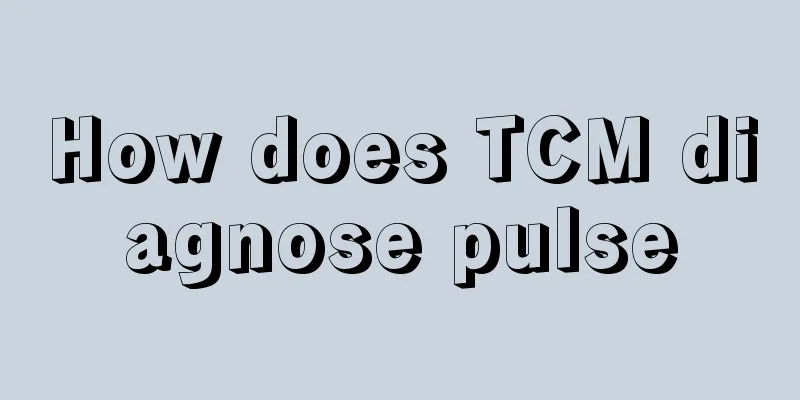How does TCM diagnose pulse

|
There is a beating pulse in the wrist joints of a person. If you touch it with your hand, you will feel that the frequency and number of beats are different. However, normal people have no way to judge the changes in the pulse and the phenomenon of the pulse. So when we go to the hospital, a Chinese medicine doctor will diagnose our pulse. When diagnosing our pulse, the doctor only needs to lightly touch the hand to get the result. What is the correct method of diagnosis? Feeling the pulse, also known as pulse diagnosis, is a diagnostic method in which Chinese medicine practitioners press the patient's arteries with their hands to understand the internal changes of the disease based on the pulse. Taking the pulse has a long history and it reflects the characteristics and experience of traditional Chinese medicine in diagnosing diseases. Pulse image can be understood as the image of the pulse. Taking the pulse is composed of the location (deep, shallow), rate (fast, slow), intensity (strong, weak), rhythm (regular or not, whether there are pauses) and shape of the arterial pulsation. Pulse is an important basis for Chinese medicine diagnosis and treatment. It has important clinical significance in distinguishing the cause of the disease, inferring the changes of the disease, identifying the true or false of the disease, and judging the prognosis of the disease. Since the pulse is the home of blood and runs through the whole body, any pathology of the internal organs is often reflected in the pulse. Sometimes the pulse has changed before the symptoms are fully manifested. Therefore, taking the pulse has been passed down as a traditional Chinese culture to this day. The correct way to feel the pulse Pulse location The "Cunkou diagnosis method" is mainly used clinically, which is to cut the posterior wrist part of the patient's radial artery. The "comprehensive diagnosis method" and the "three-part diagnosis method" were recorded in "The Yellow Emperor's Classic of Internal Medicine". They are rarely used in modern clinical practice, so they will not be introduced here. There are two theoretical bases for taking the pulse at the Cunkou point alone: one is that the lungs are connected to all the meridians, and the pulse will meet at Taiyuan point. That is, all the meridians of the human body converge in the lungs, and Cunkou is the course of the hand Taiyin lung meridian. The Taiyuan point above it is where the meridians meet, so there is a saying that "the meridians meet at Taiyuan". Second, the spleen and stomach are the source of qi and blood for all internal organs. The prosperity and decline of qi and blood in each internal organ is closely related to the strength of the spleen and stomach functions, and the hand Taiyin lung meridian also originates from the condition of the middle burner spleen function. Therefore, the strength or weakness of qi and blood in the organs and meridians throughout the body can be reflected in the Cunkou pulse. Cunkou and the distribution of organs on Cunkou Cunkou is also called Qikou or pulsekou. The Cunkou pulse can be divided into three parts: Cun, Guan and Chi. The radial styloid process behind the wrist is usually used as a marker, with the medial part being called Guan, the part in front of Guan being called Cun, and the part behind Guan being called Chi. The three parts of Cun, Guan and Chi can be further divided into three stages: floating, middle and sinking. These are the three parts and nine signs of Cunkou diagnosis. There are many different statements in the literature about the distribution of internal organs in Cun, Guan and Chi. Now in clinical practice, the internal organs that are divided by the three parts of Cun and Kou are generally divided according to the principle of "upper goes to upper" and "lower goes to lower" in "The Yellow Emperor's Classic of Internal Medicine": the left Cun is for the heart, the right Cun is for the lungs, and they cover diseases above the chest and head; the left Guan is for the liver and gallbladder, the right Guan is for the spleen and stomach, and they cover diseases from below the diaphragm to above the navel; the two Chi are for the kidneys, and include diseases from below the navel to the feet. Pulse diagnosis time The "Yellow Emperor's Internal Classic" records that the best time to take a pulse is at dawn, which means that the most ideal time to take a pulse is early in the morning. However, this is generally difficult to achieve. It is usually required to keep the consulting room quiet during pulse diagnosis, and the patient should be allowed to wait and rest for a while in a relatively quiet environment to minimize interference factors in order to achieve the same effect as pulse diagnosis at dawn. Especially for some critically ill patients, there is no need to wait for treatment and delay treatment. Position for taking pulse The correct position for taking the patient's pulse is to sit upright or lie on your back, with the forearm naturally stretched forward and placed at the same level as the heart, the wrist straight, the palm facing up, the fingers slightly bent, and a soft pulse pillow placed under the wrist joint to fully expose and stretch the Cunkou area, so that the Qi and blood can flow smoothly, making it easier to diagnose the pulse. If you lie on your side or twist your upper arm, it may cause compression of the blood vessels and blockage of the pulse. If your arm is too high or too low, it may affect the circulation of qi and blood and distort the pulse. Pulse diagnosis techniques The commonly used finger techniques for taking pulse can be summarized as finger selection, finger placement and finger movement. 1. Finger selection When taking the patient's pulse, the doctor uses his left hand to diagnose the patient's right hand, and his right hand to diagnose the patient's left hand. The three fingertips are aligned, and the fingers are slightly arched and tilted, preferably at an angle of about 45 degrees to the patient's body surface. This angle can allow the fingers to be close to the pulse beat, making it easier to take the pulse. The correct way to feel the pulse 2. Cloth finger When the doctor inserts his finger, he first presses the middle finger on the artery on the inner side of the radial styloid process, which is called the middle finger joint. Then he presses the index finger in front of the joint to determine the inch, and the ring finger behind the joint to determine the length. The fingers should be placed at an appropriate density. |
<<: The harm of cyfluthrin to humans
>>: Advantages and disadvantages of water purifier
Recommend
Is it necessary to get an anti-inflammatory injection after stitches?
If the wound is infected, it actually needs to be...
Are pears a cold fruit?
You are a common fruit in fruit stores or homes b...
What are the early symptoms of gastric cancer
The early symptoms of gastric cancer generally in...
Diagnosis method of early prostate cancer
In recent years, prostate cancer has become one o...
There are 5 symptoms of phenylketonuria
Phenylketonuria is a common disease in daily life...
What is the cause of chest and rib pain
Many people suffer from chest and rib pain in lif...
How to stretch waist muscles?
The waist muscles are very important to the human...
How to treat intrahepatic bile duct stones
Intrahepatic bile duct stones are a common diseas...
Is rectal cancer highly hereditary?
To treat rectal cancer, you still have to spend t...
What are the main causes of bladder cancer?
Bladder cancer is a very common disease in societ...
How to treat herpes disease
Congenital herpes can be treated with some antivi...
The function and dosage of edible borax
Borax is a soft, light, pigment-free crystalline ...
Which hospital is best for treating lymphoma
Lymphoma, also known as "lymphoma", is ...
What are the symptoms of ADHD in children?
Attention Deficit Hyperactivity Disorder (ADHD) i...
Signs of heart problems
Nowadays, various uncommon diseases are appearing...









